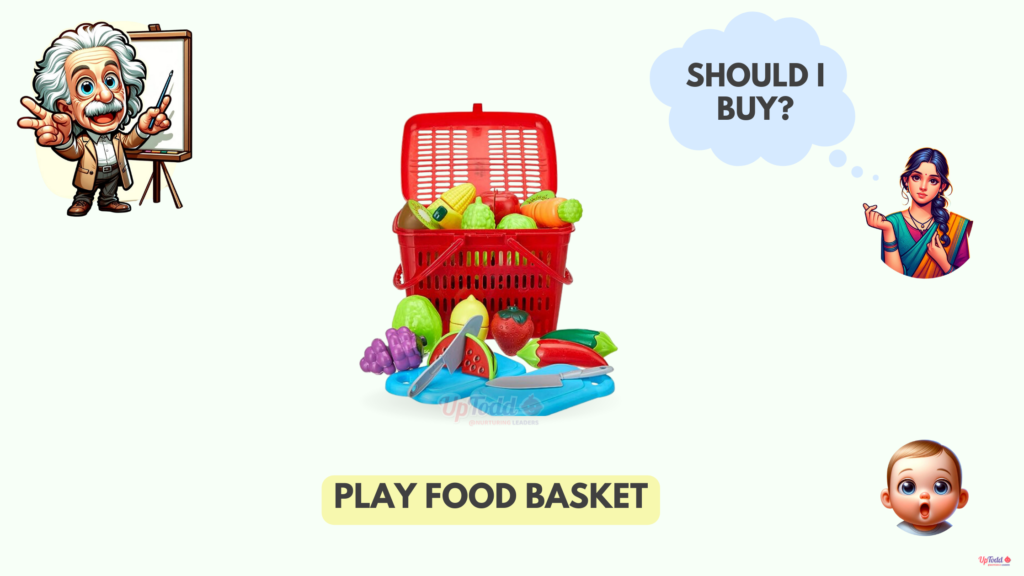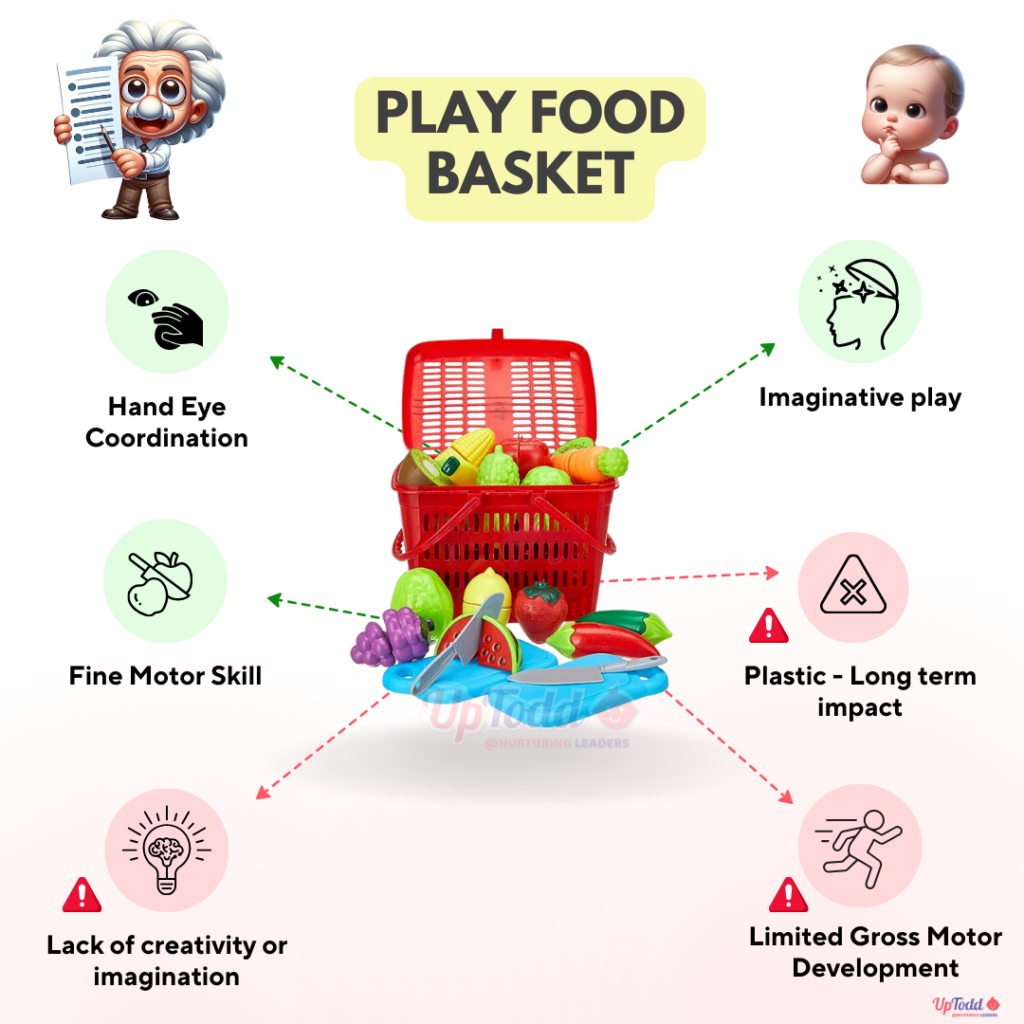
Welcome to our exploration of the Play Food Basket. In this blog post, we’ll delve into the world of this delightful pretend play toy, examining its benefits and potential drawbacks. Guided by the insights of the “Einstein Growth Guru,” we’ll uncover the advantages and considerations associated with the Play Food Basket, helping you make informed choices for your child’s playtime.

Pros of the Play Food Basket
Hand-Eye Coordination
The Play Food Basket offers opportunities for children to develop hand-eye coordination as they engage in pretend cooking and serving. Handling the play food items, sorting them into categories, and placing them in containers require precise movements, enhancing coordination and manual dexterity.
Imaginative Play
With its variety of fruit and vegetable items and accessories, the Play Food Basket stimulates imaginative play and creativity. Children can role-play as chefs, restaurant owners, or grocery store workers, inventing scenarios and storylines that reflect real-life experiences. This imaginative play fosters language development, social skills, and emotional expression.
Fine Motor Skills Development
Manipulating small play food items and accessories strengthens fine motor skills in children. From picking up tiny fruits and vegetables to chopping vegetables or arranging them in the basket, children practice precise movements that improve hand strength, finger coordination, and grip control, essential for tasks like writing and self-care.
Cons of the Play Food Basket
Plastic – Long-term Impact
This toy is constructed from plastic materials, which may have long-term environmental impacts. While plastic toys are durable and affordable, they contribute to plastic waste accumulation and may contain harmful chemicals. Caregivers should consider alternatives made from sustainable materials to minimize environmental impact. Young children may attempt to eat or swallow these plastic play food items which can be harmful for the baby.
Lack of Creativity or Imagination
While this toy offers opportunities for imaginative play, it may lack the open-endedness required for fostering creativity and imagination. Some play food sets come with predetermined recipes or scenarios, limiting children’s ability to create their own narratives and explore diverse play possibilities.
Limited Gross Motor Development
Play food baskets may not offer as many opportunities for the development of gross motor skills compared to toys that involve more physical activity. Children may not have as many chances to practice skills such as standing, walking, and jumping which are important for their overall motor development. Physical inactivity is a major con of this play set.
Age Recommendations
The Einstein Growth Guru recommends this toy for children between 1 and 3 year old. Caregivers should ensure the toy meets safety standards and inspect it regularly for signs of wear or damage.
Final Thoughts by Einstein Growth Guru
In conclusion, the Play Food Basket offers valuable opportunities for hand-eye coordination, imaginative play, and fine motor skills development. Despite its benefits, caregivers should be mindful of potential drawbacks, including the risk of confusion with real food, limitations in fostering creativity, and the possibility of children outgrowing its appeal. By understanding both the advantages and limitations of this amazing toy, parents can provide enriching play experiences that support their child’s holistic development.
Thank you for joining us on this exploration of the Play Food Basket. May your child’s playtime be filled with joy, creativity, and endless moments of growth and discovery
Explore UpTodd luminary pathway to unleash hidden abilities of the baby.
